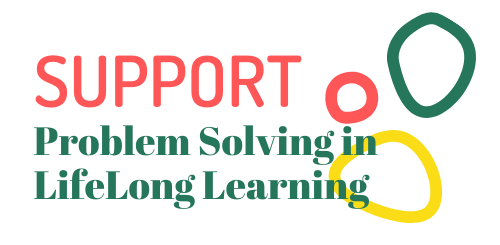Maintain a constant level of frequency
Solving the Problem: Activities for Learning Groups
Title of activity
Think-Pair-Share
Working on the activity – Suggestions
1. Define “Think-Pair-Share.” Explain to students that a Think-Pair-Share allows them to activate their prior knowledge and share ideas about content or beliefs with peers. This structure gives students a chance to organize their ideas—first in their own minds, then in a smaller group setting before sharing with the entire group. In a Think-Pair-Share, students Think individually about the question or idea(s) put forth, Pair up with someone to discuss their thinking, and then Share their conversation with their table group, and then finally with the whole group.
2. Display Think-Pair-Share prompts about a concept or topic. Give students 1-2 minutes to think about the prompt on their own. Then discuss with a partner for another few minutes.
3. Facilitate a whole group discussion.
Listen to their responses.
Ask students to elaborate on their thinking by providing explanations, evidence, or clarifications.
Suggested probing questions:
What makes you think that?
Please give an example from your experience.
What do you mean?
Try to stay neutral in your reaction to students’ comments.
Invite others to react and respond to ideas by providing alternative viewpoints, agreements or disagreements. Suggested probing questions:
Title of activity
Fishbowl
Working on the activity – Suggestions
Title of activity
Pausing in lecture
Working on the activity – Suggestions
These strategies work towards inserting wait time in lectures for students to reflect on, discuss and apply ideas just presented and to encourage them to engage actively in the lecture rather than passively taking notes. These strategies also help students to understand what they do and don’t understand about the lecture.
Ask students to not take notes as you work through a problem on the board with the class,followed by 5 minutes for them to copy down board and discuss the problem/chemical reaction/process with peers
Pause 6-10 seconds after asking a question before calling on a student to respond have students do a quick write about a concept just covered in lecture (e.g. their understanding, two questions they have about the concept as presented, what they would like to know more about etc.); optional, collect the quick write to help you better understand what they understood from the lecture and the questions they have and to keep them engaged
Turn and talks – ask peers to talk to each other about what they do and don’t understand and/or share with each other what they wrote down in their notes about a particular concept just covered in lecture. Encourage students to add to their notes from the discussion
Have students apply their understanding of a concept just covered by working with a small group around a huddle board. Optional, have a few groups share their work and elicit reactions and reviews from other students. Summarize findings and scientific normative explanations.
Have students do think-pair-shares, polling to keep their mind engaged in the topic and to share their ideas with their peers for greater meaning-making opportunities.
Solving the Problem: Self-reflection (educator’s reflection)
Points for Discussion with your Organisation
Suggested Training Course available online
